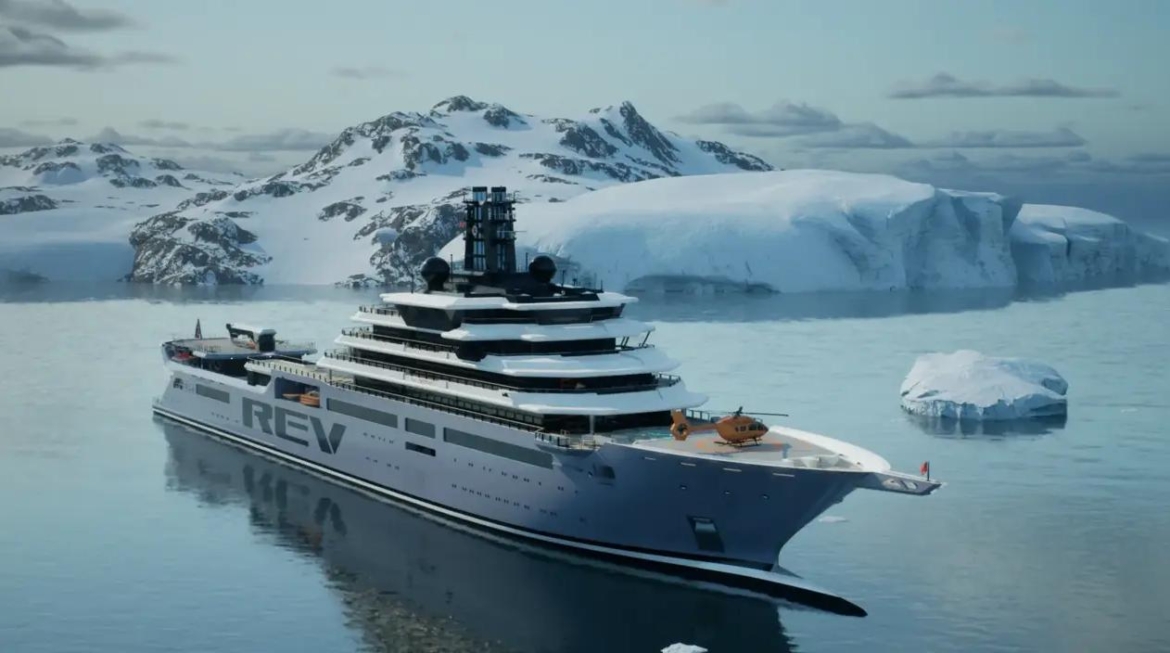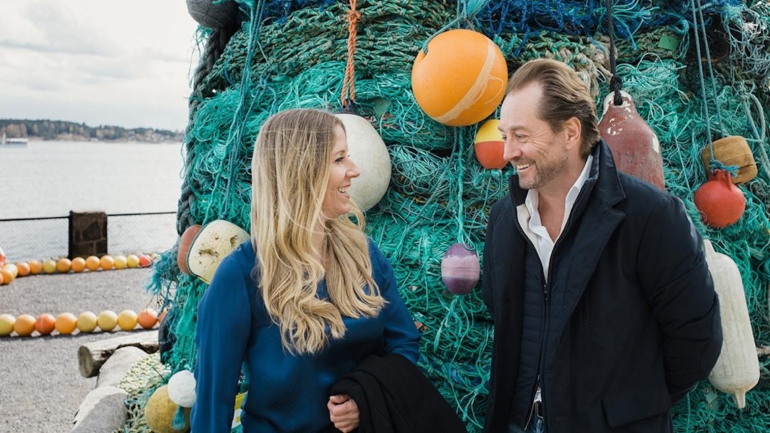We are shifting the spotlight to Damen Yachting today, not only because most billionaires like to own at least one Damen yacht in their fleet, either as their superyacht or a support vessel, but also because the shipyard continues to push the boundaries of maritime innovation. From Amazon founder Jeff Bezos’ $75 million Abeona to Mark Zuckerberg’s $30 million Wingman, and even Russian billionaire Oleg Tinkov’s $100 million La Datcha, Damen Yachts has delivered some maritime marvels. Now, they are busy outfitting not a support vessel but the world’s longest yacht, REV Ocean, spanning 638 feet, currently undergoing outfitting at Damen Shiprepair Vlissingen.
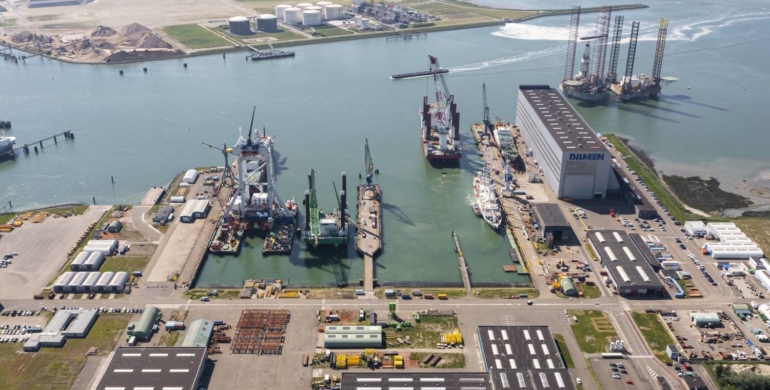
Damen Shiprepair Vlissingen and Rossinavi’s Four-10 (an outfitting division of the Italian yacht builder Rossinavi, specializing in high-end interior and exterior outfitting for superyachts) have signed a contract for the outfitting of the humongous vessel, which surpasses floating giants like the 590-footer Azzam to become the world’s most imposing research expedition vessel. The superyacht is under construction at one of Vard’s facilities in Norway and recently embarked on her sea trials ahead of a late 2026 delivery.
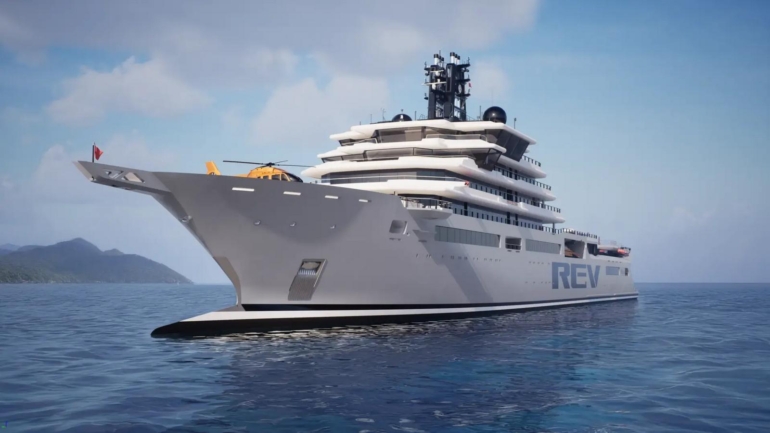
What will take place in DSV’s covered drydock is both REV Ocean’s interior and exterior outfitting. Owned by Norwegian billionaire and philanthropist Kjell Inge Røkke, work on the vessel was momentarily paused, but now the goliath, intended for marine research, aiming to combat climate change, ocean pollution, and overfishing, will go full steam ahead. Among the initial tasks is a 12-meter amidships extension, lengthening the existing hull to increase buoyancy and replacing some steel with lightweight materials, according to BOA International.
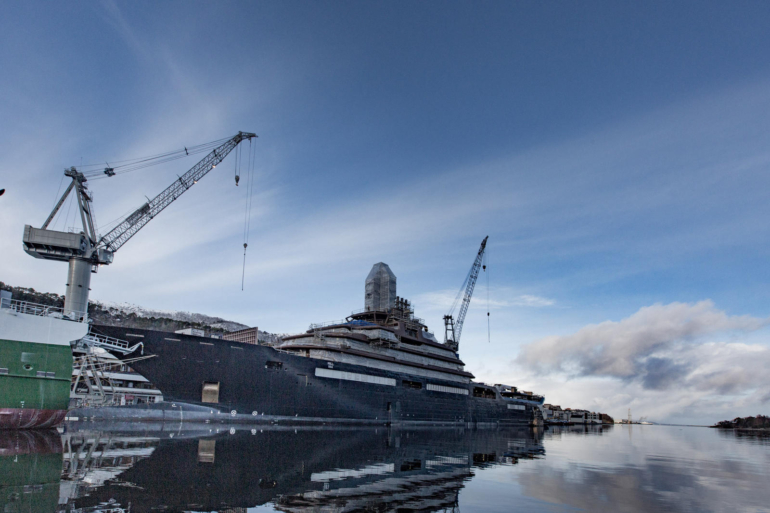
REV Ocean will also have a rearranged layout that allows “more space and increased science capacity in the main hangar of the vessel.” It is rather refreshing to see a billionaire spend $350 million on a superyacht not for lavish parties and exotic vacations but purely to do good and benefit the stunning oceans that these glorious ships sail through. The ship, equipped with two helipads and three swimming pools, will be used by scientists for free during expeditions for a third of the year, while the rest of the time it will be available for private charter to help fund the science.

Renowned yacht designer Espen Øino, is also contributing to making REV Ocean a fully-fledged superyacht, not just a drab floating lab. Of course, there is advanced oceanography equipment on board, but that will only open the gates for charter guests to explore marine areas, currents, the seabed, fish, animals, and plant life. The aforementioned extension will make space for a dedicated submarine hangar, a HiPAP system to track subsea equipment, and an additional science lab. There are eight laboratories in total aboard REV Ocean, some of which will also feature a 3D printing facility and a metal shop to create spare parts while on missions.’
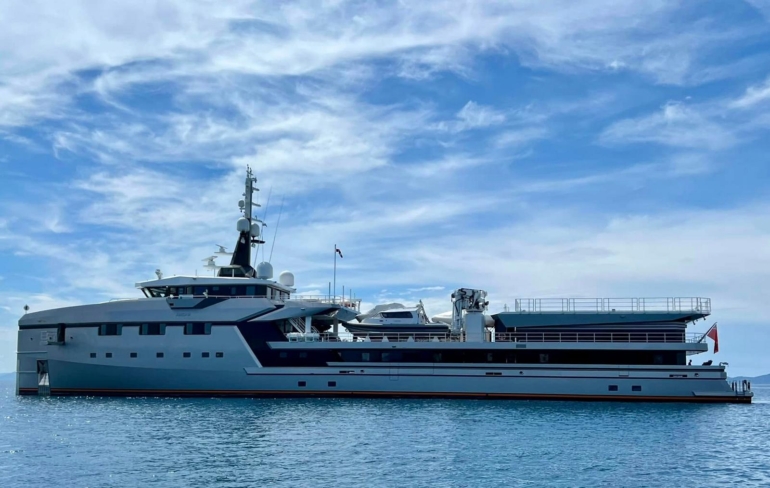
If this isn’t a world so different from ours that needs to be experienced, then I don’t know what is. Interestingly, this unique world can be shared with others, as the ship includes a media room for conducting live-streamed podcasts and interviews with people on board. Once delivered, the fuel-efficient masterpiece will be available for charter. Plans for her maiden voyage are already in place. The journey will include a trip to the Arctic via the Norwegian coast, after which she will travel to the Southern Ocean via the United States and South America.
Kjell Inge Røkke: From fish seller to a billionaire funding ocean conservation-
If you’re wondering why the billionaire owner of Aker, a shipping and offshore drilling conglomerate is doing so much for the oceans, the answer lies in his roots. The 66-year-old tycoon, worth $4.4 billion, got his start selling fish off a boat in Seattle before returning to Norway, where he built a fleet and earned a reputation as a ruthless corporate raider.
Perhaps in an effort to redefine that image, and give back to the nature that shaped his success, he commissioned a ship that will accommodate up to 60 scientists and 30 crew members during research expeditions.
It seems kindness was ingrained in him all along, despite early setbacks. A schoolteacher once wrote him off due to his dyslexia, telling the class: “The day you get yourself a driver’s license, you should consider yourself a success.” The ninth-grade dropout recalls the moment with irony, proving how easily greatness can be misjudged.
